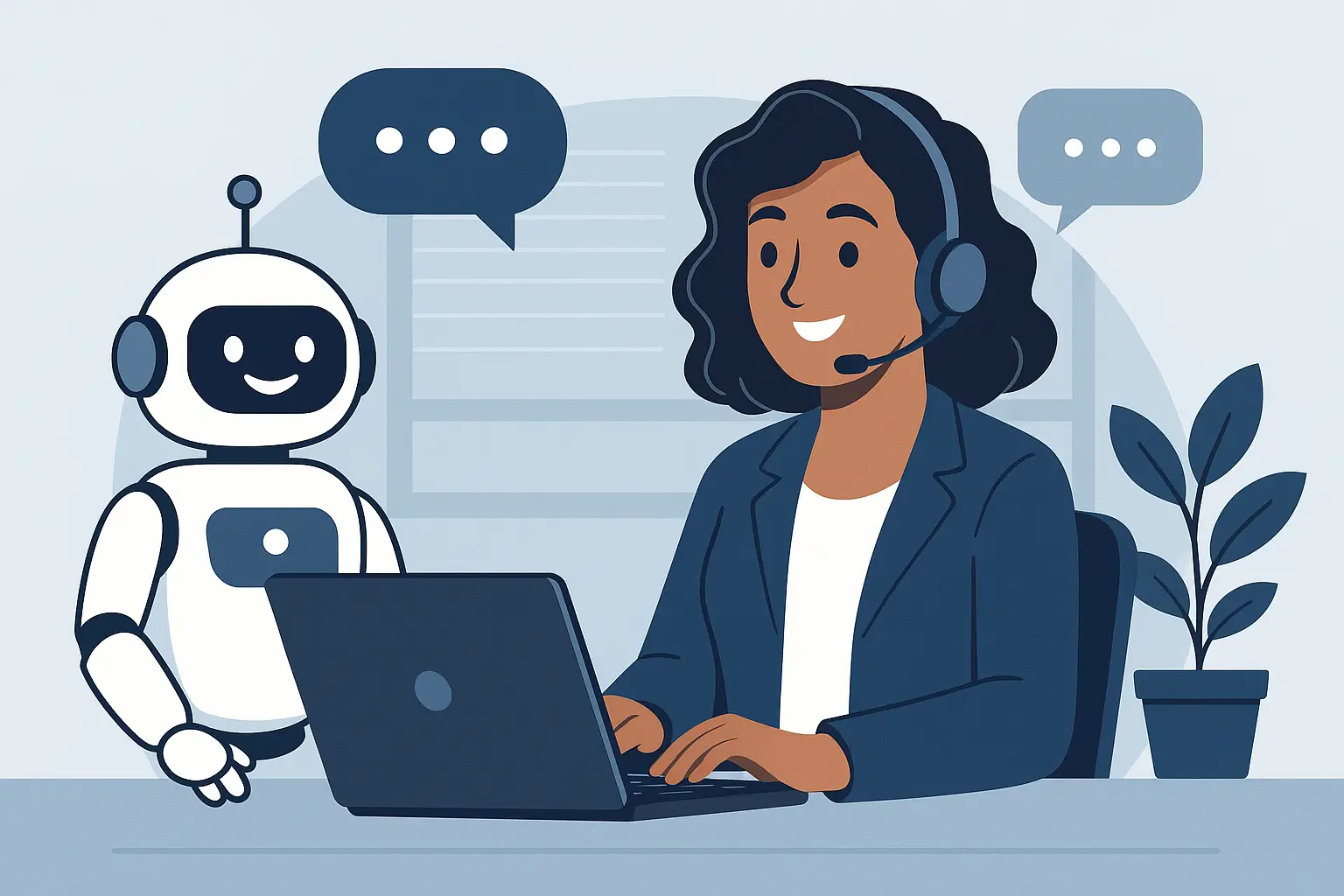Artificial Intelligence (AI) is revolutionizing customer service, and one of its most impactful applications is the chatbot. AI-powered chatbots can handle thousands of customer interactions simultaneously, deliver instant responses, and significantly reduce operational costs. But to unlock their full potential, businesses must understand how to use them strategically and effectively.
In this guide, we’ll explore how AI-powered chatbots work, their benefits, and how to implement them for optimal customer support.
What Are AI-Powered Chatbots?
AI-powered chatbots are software programs that simulate human conversations using natural language processing (NLP), machine learning, and contextual awareness. Unlike basic rule-based bots, AI chatbots can learn from interactions, understand context, and evolve their responses over time.
Key Capabilities:
- Understand and respond to human language in real-time
- Offer 24/7 support without human intervention
- Escalate complex queries to human agents
- Learn and improve from user interactions
Benefits of AI Chatbots in Customer Service
Using AI chatbots can transform your customer support strategy. Here’s how:
1. Immediate Response Times
Customers expect fast answers. Chatbots can respond instantly, reducing wait times and improving satisfaction.
2. 24/7 Availability
AI bots operate around the clock, offering consistent support across time zones—even on weekends and holidays.
3. Scalability
Whether you serve 10 or 10,000 users, chatbots can scale effortlessly without adding more human agents.
4. Cost Reduction
Automating common inquiries significantly lowers customer support costs by reducing reliance on large support teams.
5. Multichannel Support
Chatbots can be integrated into websites, apps, social media platforms, and messaging apps like WhatsApp, Messenger, and Slack.
6. Consistent Experience
AI ensures that every customer receives accurate and uniform responses, reducing errors and miscommunications.
Common Use Cases
AI chatbots serve various roles in customer service:
- Order Tracking: “Where’s my package?” inquiries are easily handled.
- FAQs Handling: Automate answers to common questions about shipping, returns, policies, etc.
- Appointment Scheduling: Ideal for healthcare, salons, and service industries.
- Product Recommendations: Guide users based on their preferences or previous behavior.
- Onboarding New Users: Help guide new customers through products or platforms.
How to Implement an AI Chatbot for Customer Service
Implementing an AI chatbot doesn’t have to be complex. Here are the key steps:
1. Define Clear Objectives
Start by identifying what you want the chatbot to achieve. Do you want it to reduce support tickets? Increase customer engagement? Guide users through a process?
2. Choose the Right Platform
Several AI chatbot platforms offer different features and integrations:
- Dialogflow (Google)
- IBM Watson Assistant
- ChatGPT API (OpenAI)
- Tidio
- Intercom
- ManyChat
Choose a platform that aligns with your business size, customer volume, and integration needs.
3. Train Your Chatbot
Upload FAQs, conversation flows, and real chat transcripts to help your chatbot learn. The more relevant data you provide, the smarter it becomes.
4. Integrate with CRM and Support Tools
Link the chatbot to your customer relationship management (CRM) system, ticketing software, and email automation tools for seamless workflow.
5. Monitor and Improve
Use analytics to track:
- Response times
- Resolution rates
- Escalation frequency
- Customer satisfaction
Tweak chatbot behavior and content based on user feedback and performance metrics.
Best Practices for Using AI Chatbots
To ensure success, keep these best practices in mind:
✅ Be Transparent
Let users know when they’re interacting with a bot. Avoid tricking them into thinking it’s a human.
✅ Provide Human Escalation
Always give users the option to speak with a live agent when needed. Hybrid support is the best of both worlds.
✅ Use Conversational Language
Avoid robotic responses. Keep the tone friendly, helpful, and natural.
✅ Update Regularly
Regularly train and update your chatbot with new questions, responses, and product details.
✅ Protect User Data
Ensure the chatbot complies with data privacy laws (e.g., GDPR, CCPA) and uses encryption for secure communication.
Measuring Success: Key Performance Indicators (KPIs)
To evaluate the chatbot’s effectiveness, track the following KPIs:
- Customer Satisfaction Score (CSAT)
- First Contact Resolution Rate (FCR)
- Average Handling Time (AHT)
- Chatbot Containment Rate (percentage of inquiries resolved without human support)
- Conversion Rate (for sales-related bots)
The Future of AI Chatbots
As natural language processing and machine learning advance, chatbots will:
- Become more human-like and emotionally intelligent
- Handle voice-based interactions more naturally
- Offer proactive customer service, predicting issues before they arise
- Integrate with IoT devices for smarter support
Final Thoughts: A Game-Changer in Customer Experience
AI-powered chatbots are not just a tech trend—they are becoming a standard in customer support. By enhancing responsiveness, reducing costs, and personalizing interactions, chatbots offer businesses a competitive advantage in 2025 and beyond.
Whether you’re a startup or a global enterprise, now is the time to adopt AI chatbots and elevate your customer service game.
